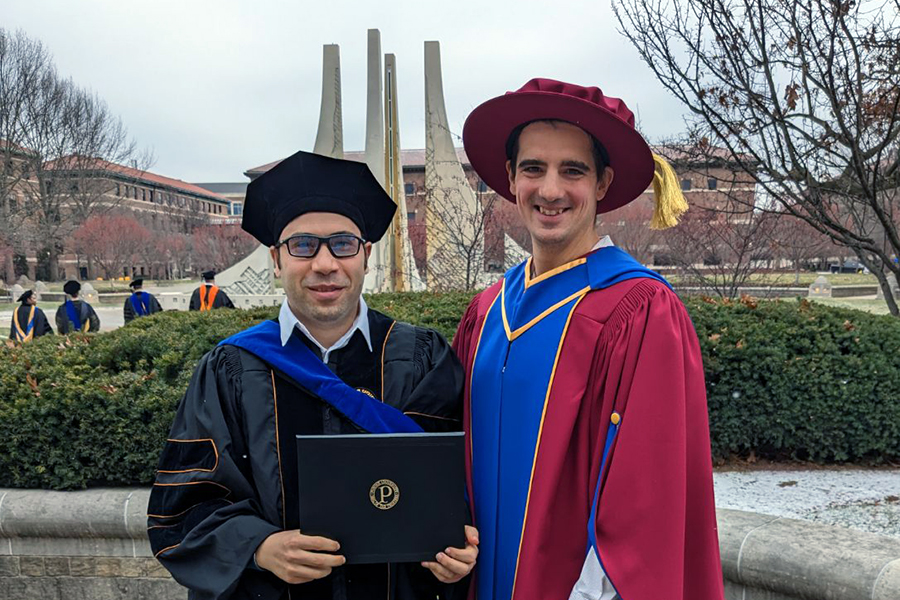Research paper from Purdue Prof. Tim Rogers and former student selected for ISCA 50th anniversary retrospective

The International Symposium on Computer Architecture (ISCA) is the premier forum for new ideas and experimental results in computer architecture. In commemoration of the 50th anniversary of ISCA, the organization put together a volume of selected papers and author retrospectives from 1996-2020. Of the 1,077 papers reviewed for possible inclusion in the ISCA@50 25-year Retrospective 1996-2020, only 98 were selected. The collection represents significant and often memorable papers intended to tell a story of how research at ISCA progressed over those twenty-five years. A retrospective from the authors accompanies each selected paper.
The 2020 paper “Accel-Sim: An extensible simulation framework for validated GPU modeling,” authored by Tim Rogers, associate professor in Purdue University’s Elmore Family School of Electrical and Computer Engineering, and his recently graduated Ph.D. student Mahmoud Khairy (PhD ECE ’22) was among those selected.
Rogers says they are honored that the Accel-Sim paper was selected to appear in the retrospective. He says it resulted from several years of hard, diligent work to create a credible methodology to study the most important computational accelerators of our time.
“The steady enhancement of General-Purpose GPU technology drives constant innovation in machine learning,” says Rogers. “Accel-Sim models these machines at a very low level of detail, so researchers can study what the innovations of the next decade will look like. Before the Accel-Sim paper, it was extremely difficult or impossible for researchers outside of billion-dollar companies to study how these systems should evolve.”
Khairy says he spent almost two and half years of his Ph.D. working on this project.
“I am so delighted to witness the community recognizing my dedication,” he says. “Accel-Sim is widely used by the research community worldwide. One important aspect of Accel-Sim is its extensibility that can model different generations of GPUs and support cutting-edge deep learning workloads.”
As an open-sourced infrastructure, Accel-Sim continues to live on as a core piece of the architecture and systems community, enabled by the continued efforts from Prof. Rogers’ group and other contributors across the country and the globe.
